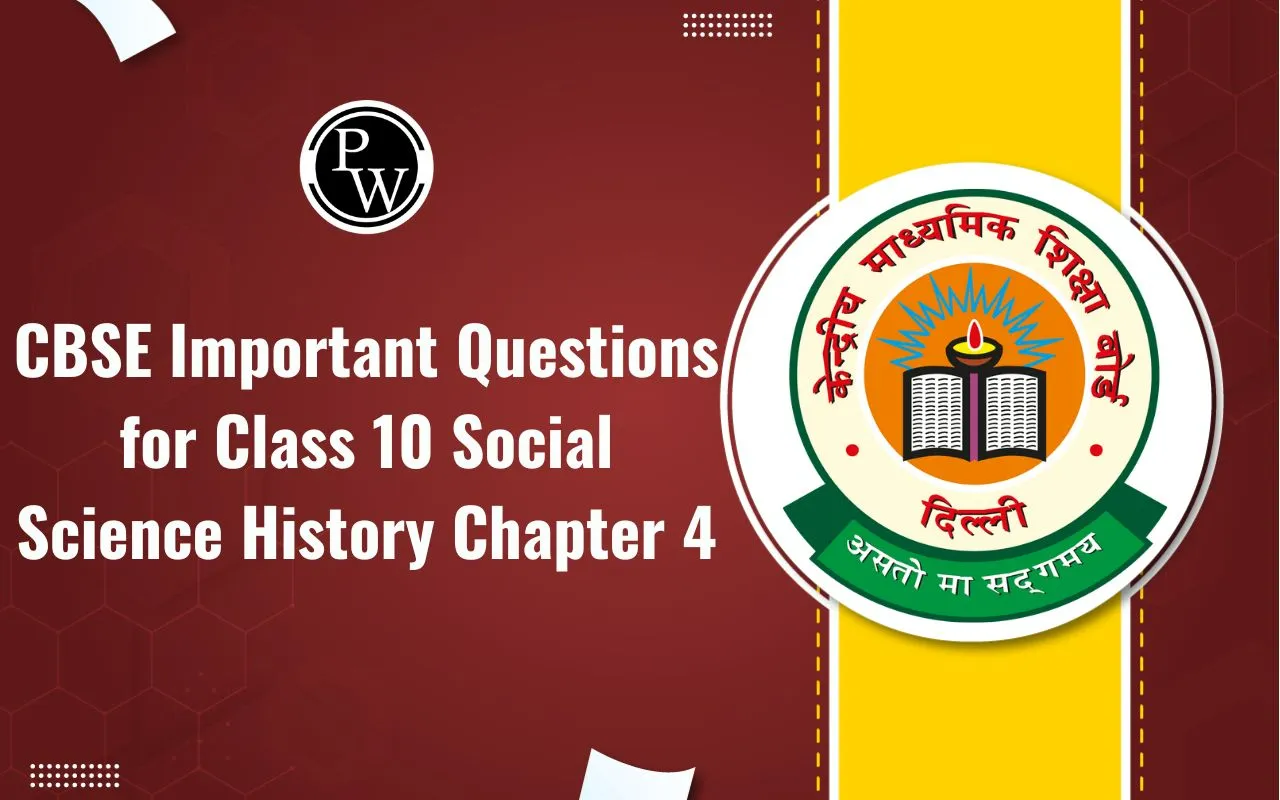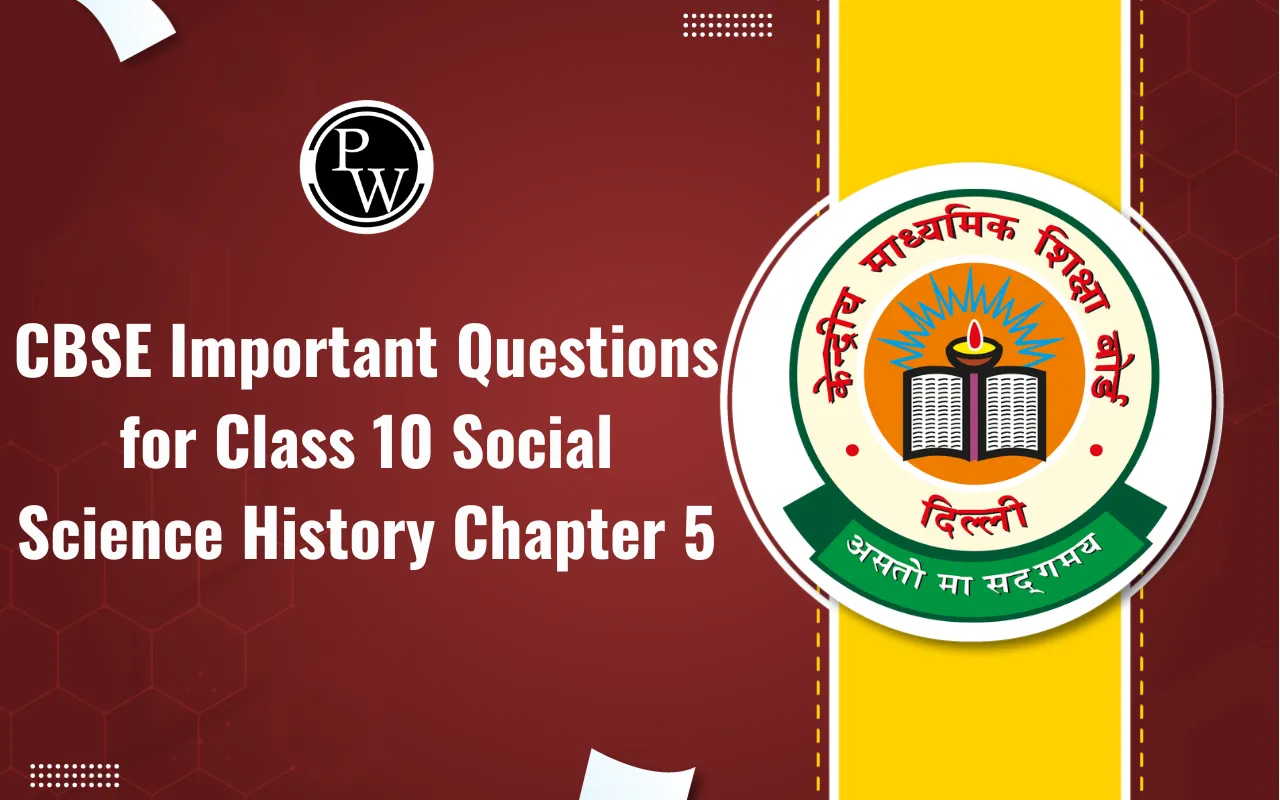
RS Aggarwal Solutions for Class 10 Maths Chapter 11 Exercise 11.2: RS Aggarwal Solutions for Class 10 Maths Chapter 11 Exercise 11.2 focus on the topic of Arithmetic Progressions (AP). In this exercise, students are introduced to problems involving finding specific terms of an AP sequence using the formula for the nth term.
They learn to identify the first term (a) and the common difference (d) of the AP sequence and apply the formula to calculate any desired term. The solutions provide step-by-step explanations and calculations, helping students grasp the concept of AP and strengthen their problem-solving skills in arithmetic progression.RS Aggarwal Solutions for Class 10 Maths Chapter 11 Exercise 11.2 Overview
RS Aggarwal Solutions for Class 10 Maths Chapter 11 Exercise 11.2 are prepared by experts at Physics Wallah. This chapter is all about Arithmetic Progressions (AP). The solutions explain clearly how to use the formula to find any term in the sequence, starting from the first term and the difference between consecutive terms. These solutions are designed to help students understand AP better and solve related problems with ease.RS Aggarwal Solutions for Class 10 Maths Chapter 11 Exercise 11.2 PDF
You can find the PDF link for RS Aggarwal Solutions for Class 10 Maths Chapter 11 Exercise 11.2 below. This PDF gives clear answers to problems about Arithmetic Progressions (AP). It helps students learn how to find specific terms in a sequence where each term increases by the same amount. The solutions show step-by-step how to use a formula to figure out any term in the sequence using the first term and the difference between terms.RS Aggarwal Solutions for Class 10 Maths Chapter 11 Exercise 11.2 PDF
RS Aggarwal Solutions for Class 10 Maths Chapter 11 Arithmetic Progressions Exercise 11.2
Here we have provided RS Aggarwal Solutions for Class 10 Maths Chapter 11 Arithmetic Progressions Exercise 11.2 for the ease of students so that they can prepare better for their exams. Q. Determine k so that (3k -2), (4k-6) and (k +2) are three consecutive terms of an AP.
Solution:
It is given that (3k -2), (4k – 6) and (k + 2) are three consecutive terms of an A.P.
Therefore,
(4k–6)–(3k−2)=(k+2)–(4k–6)
4k–6–3k+2=k+2–4k+6
⇒k–4=−3k+8
⇒k+3k=4+8
⇒4k=12
⇒k=3Hence the value of k is 3.
Solution:
If the terms are in AP, we know that 2B = A+C.
A = (5x+2)
B = (4x-1)
C = (x + 2)
2B = A + C
=> 2(4x - 1) = 5x + 2 + x + 2
=> 8x - 2 = 6x + 4
=> 8x - 6x = 4 + 2
=> 2x = 6
=> x = 3
Q.
IF (3y-1), (3y + 5) and (5y + 1) are three consecutive terms of an AP then find the value of y.
Solution:
AP :
3
y
−
1
,
3
y
+
5
,
5
y
+
1
.
As per the question , we have
First term,
a
=
3
y
−
1
----(1)
Second term ,
a
2
=
3
y
+
5
a
+
d
=
3
y
+
5
----(2)
Third term,
a
3
=
5
y
+
1
a
+
2
d
=
5
y
+
1
-----(3)
Now, subtracting equation (2) from equation(3), we have
d
=
2
y
−
4
----(4)
Similarly, subtracting equation (1) from equation(3) , we get
2
d
=
2
y
+
2
d
=
y
+
1
( Multiplying the whole equation by
1
2
) -----(5)
Solving equation(4) and (5) , we obtain
2
y
−
4
=
y
+
1
2
y
−
y
=
1
+
4
y
=
5
Thus , y = 5
Q.
Find the value of x for which (x +2), 2x, (2x+3) are three consecutive terms of an AP.
Solution:
Let us take an A.P of terms a, b, c
The arithmetic mean is b
Here,
a
=
x
+
2
b
=
2
x
c
=
2
x
+
3
On substituting the values in the formula we get :
2
x
=
x
+
2
+
2
x
+
3
2
2
x
=
3
x
+
5
2
4
x
=
3
x
+
5
x
=
5
Hence the value of x is 5
Q.
Show that
(
a
−
b
)
2
,
(
a
2
+
b
2
)
and
(
a
+
b
)
2
are in AP.
Q.
The sum of three consecutive terms terms of an is 21 and the sum of the squares of these terms is 165. find these terms.
Solution:
The given terms are
(
a
−
b
)
2
,
(
a
2
+
b
2
)
and
(
a
+
b
)
2
.
A =
(
a
−
b
)
2
B =
(
a
2
+
b
2
)
C =
(
a
+
b
)
2
If A, B and C are in A. P. then 2B = A + C
Consider,
(
a
–
b
)
2
+
(
a
+
b
)
2
=
(
a
2
–
2
a
b
+
b
2
)
+
(
a
2
+
2
a
b
+
b
2
)
=
2
a
2
+
2
b
2
=
2
(
a
2
+
b
2
)
Since
(
a
–
b
)
2
+
(
a
+
b
)
2
=
2
(
a
2
+
b
2
)
,
(
a
−
b
)
2
,
(
a
2
+
b
2
)
and
(
a
+
b
)
2
are in A.P.
Q.
Find three numbers in AP whose sum is 15 and product is 80.
Solution:
let a - d , a , a + d are three terms of an AP
according to the problem given;
sum of the terms = 15
a - d + a + a + d = 15
3a = 15
a = 15 / 3
a = 5
product = 80
( a - d ) a ( a + d ) = 80
( a² - d² ) a = 80
( 5² - d² ) 5 = 80
25 - d² = 80 /5
25 - d² = 16
- d² = - 9
d² = 3²
d = ± 3
Therefore,
a = 5 , d = ±3
required 3 terms are
a - d = 5 - 3 = 2
a = 5
a+ d = 5 + 3 = 8
( 2 , 5 , 8 ) or ( 8 , 5 , 2 )
Q.
The sum of three numbers in AP is 3 and their product is -35. find the numbers.
Solution:
Let (x-d), x, (x+d) be in AP
Then x-d+x+x+d = 3
x = 1
(x-d) x(x+d) = - 35
(1-d)1(1+d) = - 35
1 - d.d = -35
d = 6
(1-6), 1, (1+6)
-5, 1, 7
Q.
Divide 24 in three parts such that they are in AP and their product is 440.
Solution:
Let the required terms of the given AP be a-d, a and a+d
Where the first term is a-d
The common difference = d
Given : The sum of the three parts = 24
∴ (a-d)+(a)+(a+d) = 24
3a = 24
a = 8
Given : The product of these three terms = 440
∴ (a-d) (a) (a+d) = 440
(8-d) (8) (8+d) = 440
- 8d² + 512 = 440
- 8d² = 440 - 512
- 8d² = - 72
d² = 72/8
d² = 9d=
 3
So the three required terms of AP is 8 - 3 = 5 ; 8 and 8 + 3 = 11
Three terms are 5, 8, 11 or 11,8,5
3
So the three required terms of AP is 8 - 3 = 5 ; 8 and 8 + 3 = 11
Three terms are 5, 8, 11 or 11,8,5
Solution:
Let three consecutive terms be a-d, a, a+d
where d is common difference
a-d+a+a+d=21
3a=21
a=7
(a-d)²+a²+(a+d)²=165
a²-2ad+d²+a²+a²+2ad+d²=165
3a²+2d²=165
147+2d²=165
2d²=18
d²=9
d=3
a-d=4
a+d=10
the terms are 4,7,10
Q.
The angles of a quadrilateral are in AP whose common difference is
10
∘
find the angle.
Solution:
Since the angles are in A.P., let the angles are p, p+10, p+20, p+30
sum of angles=360
⇒ p + p+10 + p+20 + p+30 = 360
⇒ 4p + 60 = 360
⇒ 4p = 360-60 = 300
⇒ p = 300/4 = 75So the angles are
p = 75
p+10 = 75+10 = 85
p+20 = 75+20 = 95
p+3
Q.
Find four numbers in AP whose sum is
28
and the sum of whose squares is
216
.
Solution:
Let the four numbers be
(
a
−
3
d
)
,
(
a
−
d
)
,
(
a
+
d
)
and
(
a
+
3
d
)
.
Given:
1. Their sum is
28
(
a
−
3
d
)
+
(
a
−
d
)
+
(
a
+
d
)
+
(
a
+
3
d
)
=
28
⇒
4
a
=
28
∴
a
=
7
.
2.Their sum of square
216
(
a
−
3
d
)
2
+
(
a
−
d
)
2
+
(
a
+
d
)
2
+
(
a
+
3
d
)
2
=
216
⇒
a
2
+
9
d
2
−
6
a
d
+
a
2
+
d
2
−
2
a
d
+
a
2
+
d
2
+
2
a
d
+
a
2
+
9
d
2
+
6
a
d
=
216
⇒
4
a
2
+
20
d
2
=
216
⇒
a
2
+
5
d
2
=
54
Putting the value of
a
49
+
5
d
2
=
54
5
d
2
=
5
d
2
=
1
∴
d
=
±
1
.
For
d
=
1
:
The numbers are
7
+
3
,
7
+
1
,
7
−
1
,
7
−
3
⇒
10
,
8
,
6
,
4
.
For
d
=
−
1
:
The numbers are
7
+
3
,
7
+
1
,
7
−
1
,
7
+
3
⇒
4
,
6
,
8
,
10
.
Q.
Divide 32 into four parts which are the four terms of an AP such that the product of the first and the fourth terms is to the product of the second and the third terms as 7:15.
Solution:
In case of 4 terms, we usually take 2d as the common difference and the average of the two middle terms should be a.
Therefore, Let a-3d, a-d, a+d and a+3d be the 4 terms.
Now, By Question, we have
(a-3d) + (a-d) + (a+d) + (a+3d) = 32
=> 4a = 32
=> a = 8
Again, By Question, we have
(a-3d) (a+3d) : (a-d) (a+d) = 7 : 15
=>
a
2
−
9
d
2
:
a
2
−
d
2
= 7 : 15
=>
15
(
a
2
−
9
d
2
)
=
7
(
a
2
−
d
2
)
=>
15
a
2
−
135
d
2
.
=
7
a
2
−
7
d
2
=>
15
a
2
−
7
a
2
.
=
135
d
2
−
7
d
2
=>
8
a
2
.
=
128
d
2
=>
8
(
8
)
2
.
=
128
d
2
(Substituting the value of a)
=>
512.
=
128
d
2
=>
4.
=
d
2
=>
d
=
+
2
,
−
2
Therefore Common Difference = 2d = (+)(-)4
Therefore, The required AP is -
a-3d = 8 - 3(2) = 2. Or. a-3d = 8-3(-2) = 14
a-d. = 8 - 2. = 6. Or. a-d. = 8-(-2) = 10
a+d. = 8+2. = 10. Or. a+d. = 8+(-2) = 6
a+3d = 8+3(2) = 14. Or. a+3d = 8+3(-2) = 2
Note: In one case the Common Difference is 4 where as in the 2nd case the Common Difference is -4.
Q.
The sum of first three terms of an AP is 48. If the product of first and second terms exceeds 4 times the third term by 12. find the AP.
Solution:
let the first 3 terms of the A.P be a-d, a and a+d
by data, (a-d) + a + (a+d)= 48
3a=48
a=16
as per data: (a-d)a= 4(a+d)+12--(1)
substituting the value of 'a' in (1); (16-d)16=4(16+d) +12
256 - 16d = 64 + 4d + 12
256 - 16d =76 + 4d
256-76= 16d+4d
180 = 20d
d= 9
therefore the A.P is : 16, 25, 34...
Benefits of RS Aggarwal Solutions for Class 10 Maths Chapter 11 Exercise 11.2
- Clear Explanations: Provides easy-to-understand explanations of Arithmetic Progressions (AP) concepts.
- Step-by-Step Guidance: Guides students through solving problems with detailed step-by-step solutions.
- Enhanced Understanding: Helps students grasp how to find specific terms in AP sequences.
- Improved Problem-Solving Skills: Enhances students ability to solve AP-related problems confidently.
- Exam Preparation: Prepares students effectively for exams by covering essential AP topics.
- Boosts Confidence: Builds confidence in tackling AP questions in tests and assessments.
- Comprehensive Coverage: Covers all aspects of Chapter 11 Exercise 11.2, ensuring thorough understanding.
RS Aggarwal Solutions for Class 10 Maths Chapter 11 Exercise 11.2 FAQs
What is an Arithmetic Progression (AP)?
An Arithmetic Progression is a sequence of numbers where the difference between consecutive terms is constant.
What is the common difference in an AP?
The common difference d in an AP is the constant value added to each term to get the next term in the sequence.
What is the significance of the common difference in an Arithmetic Progression (AP)?
The common difference d determines the rate at which each term in the sequence changes. It helps in predicting future terms and calculating properties like the nth term or the sum of terms in the sequence.
How can I identify if a sequence of numbers is an Arithmetic Progression (AP)?
To identify an AP, check if the difference between consecutive terms remains constant throughout the sequence. If each term increases or decreases by the same amount compared to the previous term, then it is an Arithmetic Progression.
🔥 Trending Blogs
Talk to a counsellorHave doubts? Our support team will be happy to assist you!

Check out these Related Articles
Free Learning Resources
PW Books
Notes (Class 10-12)
PW Study Materials
Notes (Class 6-9)
Ncert Solutions
Govt Exams
Class 6th to 12th Online Courses
Govt Job Exams Courses
UPSC Coaching
Defence Exam Coaching
Gate Exam Coaching
Other Exams
Know about Physics Wallah
Physics Wallah is an Indian edtech platform that provides accessible & comprehensive learning experiences to students from Class 6th to postgraduate level. We also provide extensive NCERT solutions, sample paper, NEET, JEE Mains, BITSAT previous year papers & more such resources to students. Physics Wallah also caters to over 3.5 million registered students and over 78 lakh+ Youtube subscribers with 4.8 rating on its app.
We Stand Out because
We provide students with intensive courses with India’s qualified & experienced faculties & mentors. PW strives to make the learning experience comprehensive and accessible for students of all sections of society. We believe in empowering every single student who couldn't dream of a good career in engineering and medical field earlier.
Our Key Focus Areas
Physics Wallah's main focus is to make the learning experience as economical as possible for all students. With our affordable courses like Lakshya, Udaan and Arjuna and many others, we have been able to provide a platform for lakhs of aspirants. From providing Chemistry, Maths, Physics formula to giving e-books of eminent authors like RD Sharma, RS Aggarwal and Lakhmir Singh, PW focuses on every single student's need for preparation.
What Makes Us Different
Physics Wallah strives to develop a comprehensive pedagogical structure for students, where they get a state-of-the-art learning experience with study material and resources. Apart from catering students preparing for JEE Mains and NEET, PW also provides study material for each state board like Uttar Pradesh, Bihar, and others
Copyright © 2025 Physicswallah Limited All rights reserved.
Get App









